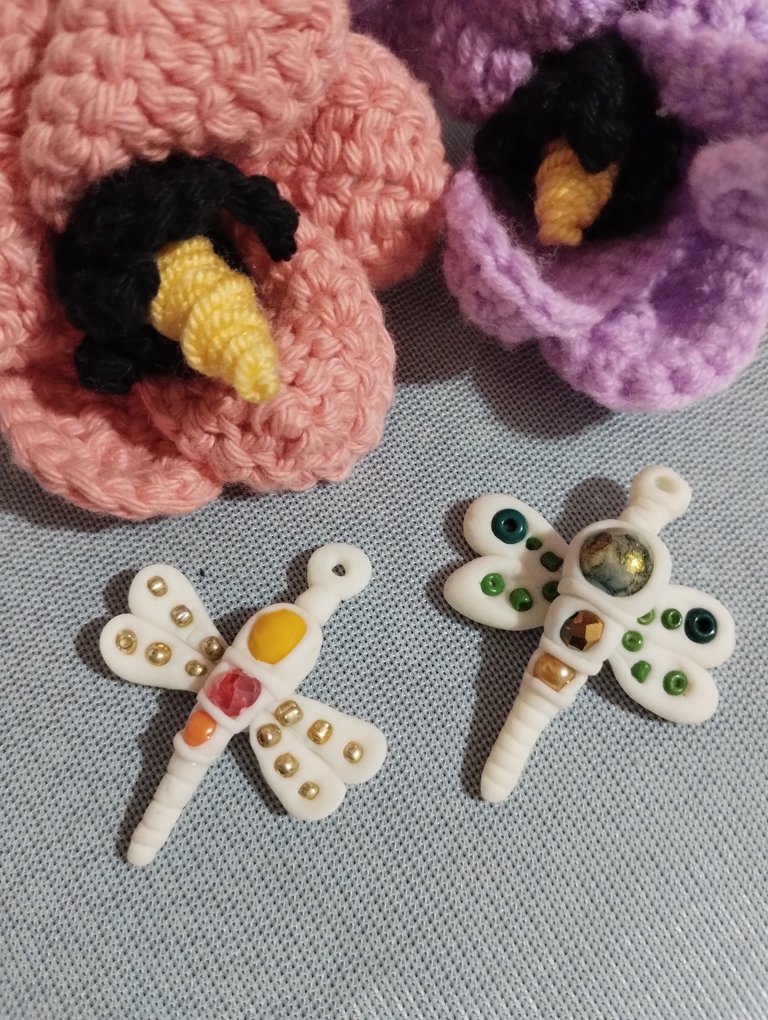

What a pleasure to be back with you on #jewelry. I can't hide the joy I feel to have tried this super material that some people know as flexible dough or you may have heard it as porcelanicron or cold porcelain. It is the same thing and it is a kind of modeling clay made from starch and white glue. It is very malleable and when I refer to it as a noble material, it is because it really is, because it can be worked and painted with different techniques, some basic and others more advanced. | Que gusto volver a estar con ustedes en #jewelry. No puedo disimular la alegría que siento de haber probado este súper material que algunos conocen como masa flexible o puede ser que lo hayan escuchado alguna vez como porcelanicron o porcelana fría. Es lo mismo y se trata de una especie de arcilla para modelar hecha a base de almidón y pegamento blanco Es muy maleable y cuando me refiero a ella como un material noble, es porque realmente lo es, pues se puede trabajar y pintar con distintas técnicas, algunas básica y otras más avanzadas. |

What I want to share with you today is something creative and very beautiful. I don't know if this technique has a name, but it occurred to me that I could embed some beads and crystals in the cold porcelain figure. | Lo que quiero compartirles hoy es algo creativo y muy bonito. No sé si está técnica tenga algún nombre, pero se me ocurrió que podía incrustar algunas cuentas y cristales en la figura de porcelana fría. |

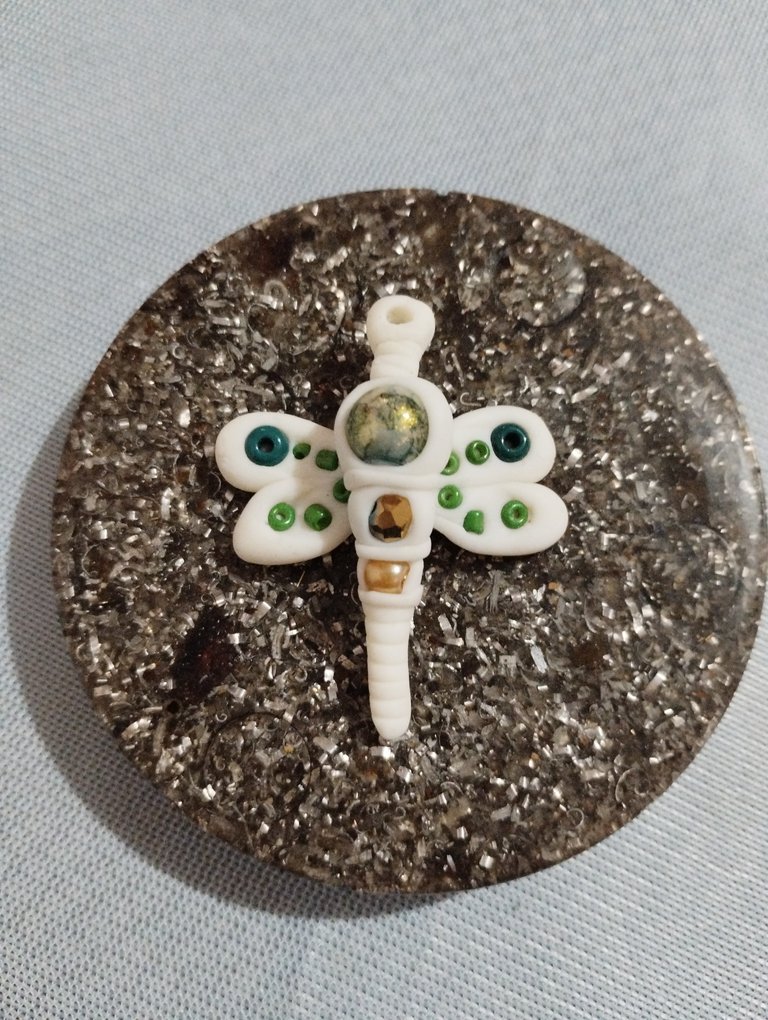

Let's see how easy the procedure is and it's basically the same for everyone. I bought a set of modeling stecas and believe me, I hardly used any of them. They are inexpensive and although they have line defects in the plastic that produce unwanted marks on the figure we are working on, looking for the shape, they can be used. | Veamos lo fácil que resulta el procedimiento y básicamente es el mismo para todos. Compré un juego de estecas para modelar y créanme, prácticamente no use ninguna. Son económicas y aunque tienen defectos de líneas en el plástico que producen marcas no deseadas en la figura que estamos trabajando, buscando la forma, se pueden utilizar. |

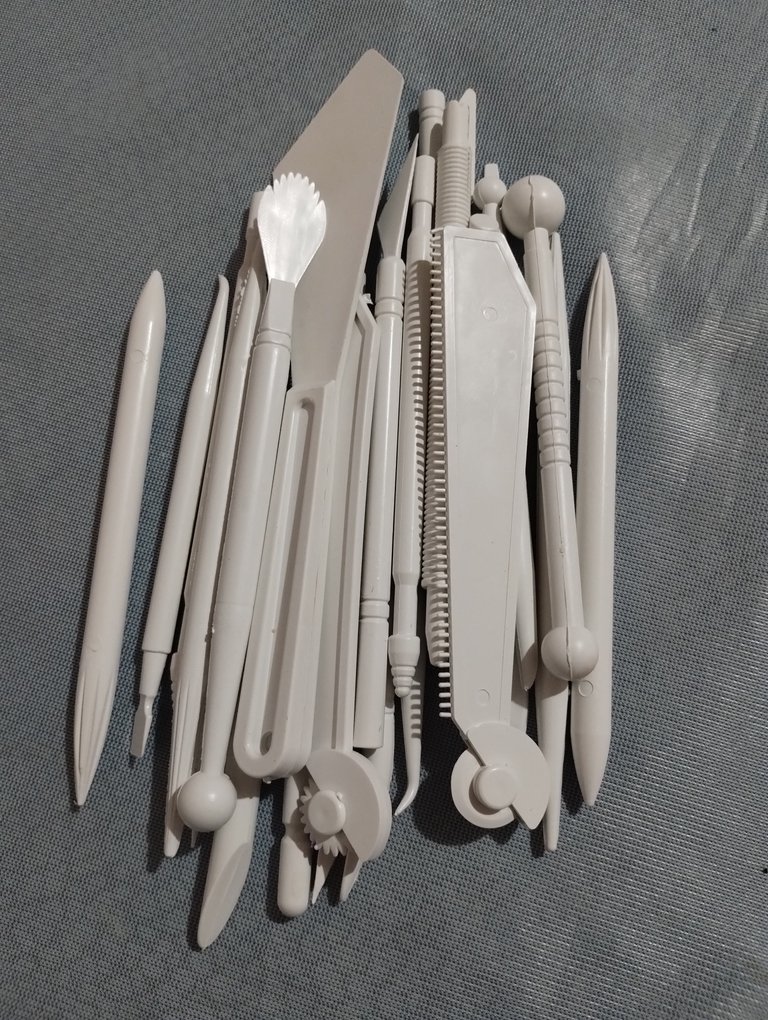

When the cold porcelain dries, which happens quite quickly, it creates a film on the surface, so if we do not want to use a lot of glue to join the pieces, it is best to work quickly and take advantage of the glue that comes with the dough. Always keep the part of the dough that we are not using well sealed, avoiding air currents. | Cuando la porcelana fría se va secando, lo cual ocurre con bastante rapidez, crea una película en la superficie así que si no deseamos usar mucho pegamento para unir las piezas, lo mejor es trabajar rápidamente y aprovechar el pegamento que de por sí trae la masa. Siempre se debe mantener bien sellada la parte de masa que no estamos utilizando, evitando corriente de aire.. |

Now let's go to the details. I separated the dough into small portions, depending on the size of the stone to be used and I made small spheres, to embed the stones just make a little pressure on the dough with the stone, using your finger until it is sufficiently embedded. We join three embedded stones and we have the body part. | Ahora vamos con los detalles. Separé la masa en pequeñas porciones, dependiendo del tamaño de la piedra a utilizar e hice pequeñas esferas, para incrustar las piedras no hay más que hacer un poco de presión sobre la masa con la piedra, enojando con el dedo hasta que quede lo suficientemente incrustada. Unimos tres piedras incrustadas y tenemos la parte del cuerpo. |



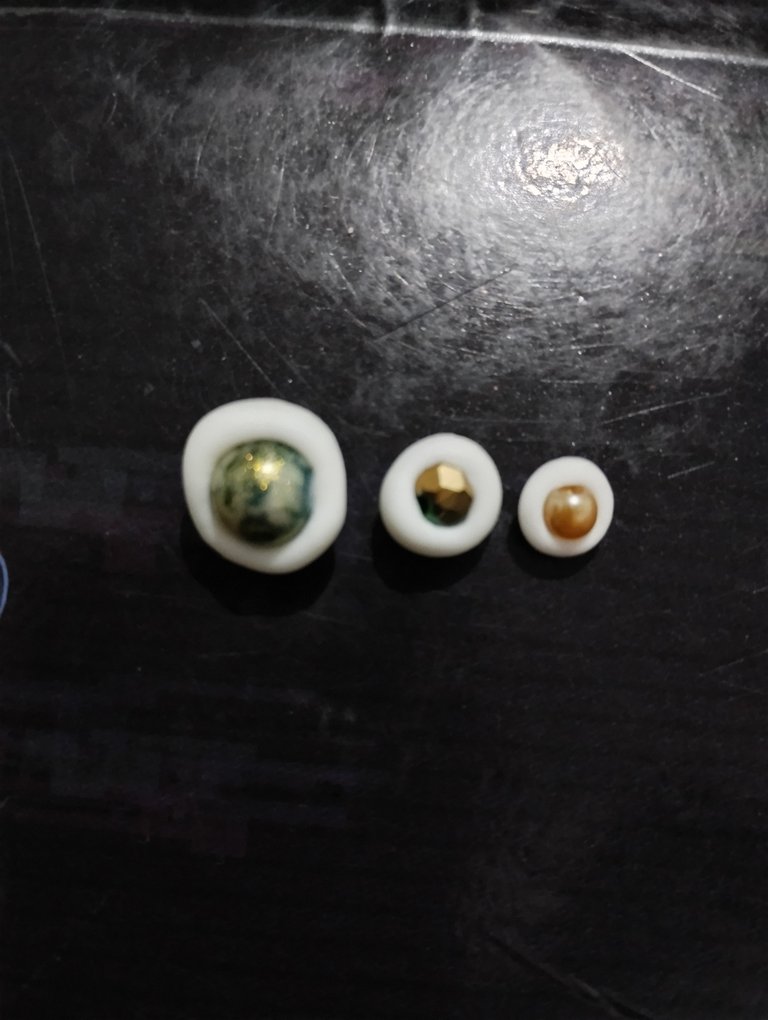

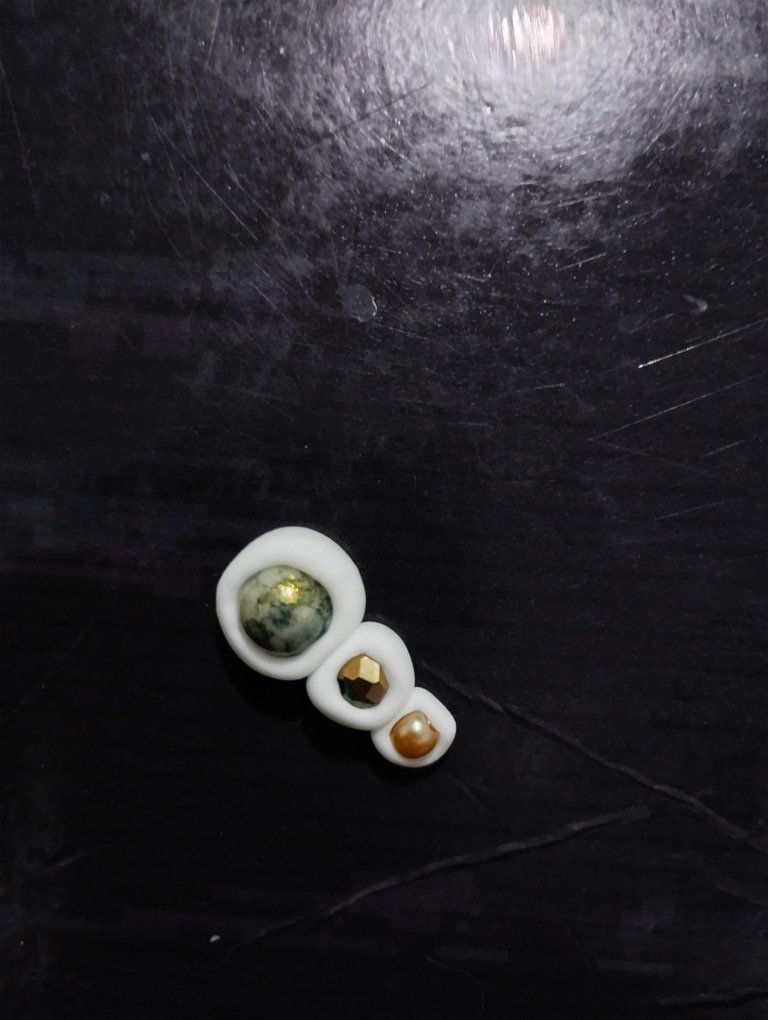

For the other part of the body we make a cylinder and mark it with an exacto or with some sharp tool. We make horizontal lines. And we join the two parts. We place a thin strip of dough between the stones to smooth the union of them. | Para la otra parte del cuerpo hacemos un cilindro y lo marcamos con un exacto o con alguna herramienta con filo. Hacemos líneas horizontales. Y unimos las dos partes. Colocamos una delgada tira de masa entre las piedras para emprolijar la unión de las mismas. |

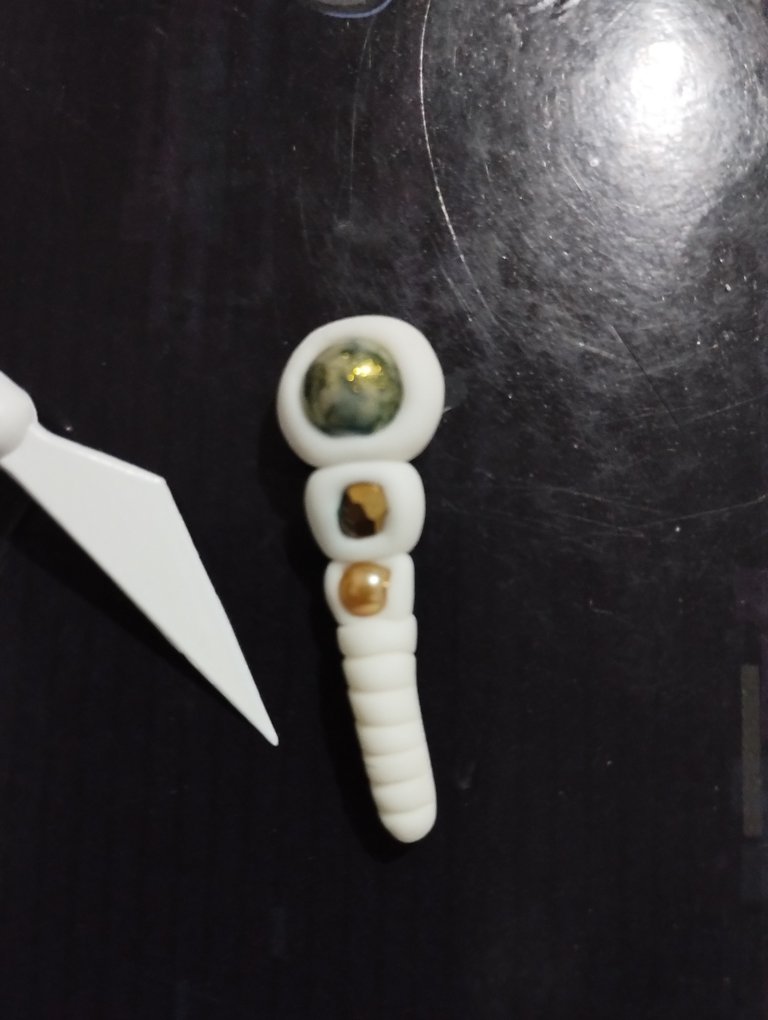

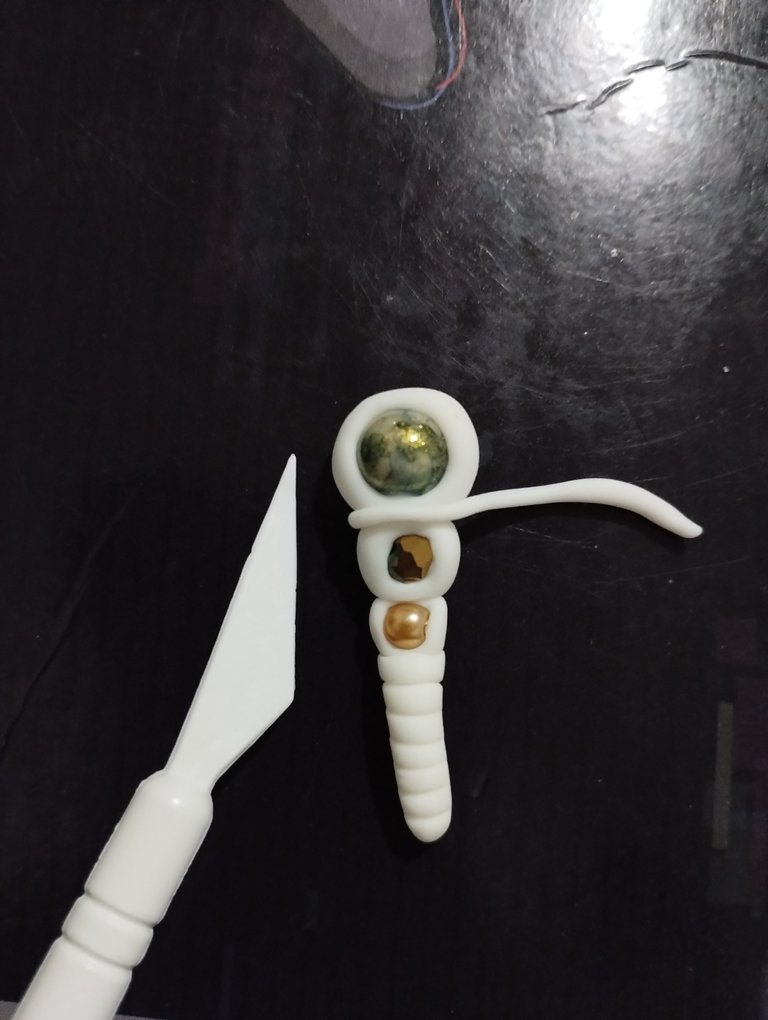

Now let's work on the wings. We separate a portion of porcelain in two equal parts and then in two again, so we have four approximately equal portions and we give them a drop shape. With your finger or any other tool you can use, slightly flatten the thinnest part of the drop and embed some beads on the wings. We join them to the body leaving the union at the back. | Ahora trabajemos las alas. Una porción de porcelana la separamos en dos partes iguales y luego en dos nuevamente, así tenemos cuatro porciones aproximadamente iguales y les damos forma de gota. Con el dedo o alguna herramienta que nos sirva aplastamos ligeramente la parte más delgada de la gota e incrustamos algunas mostacillas sobre las alas. Las unimos al cuerpo dejando la unión por detrás. |

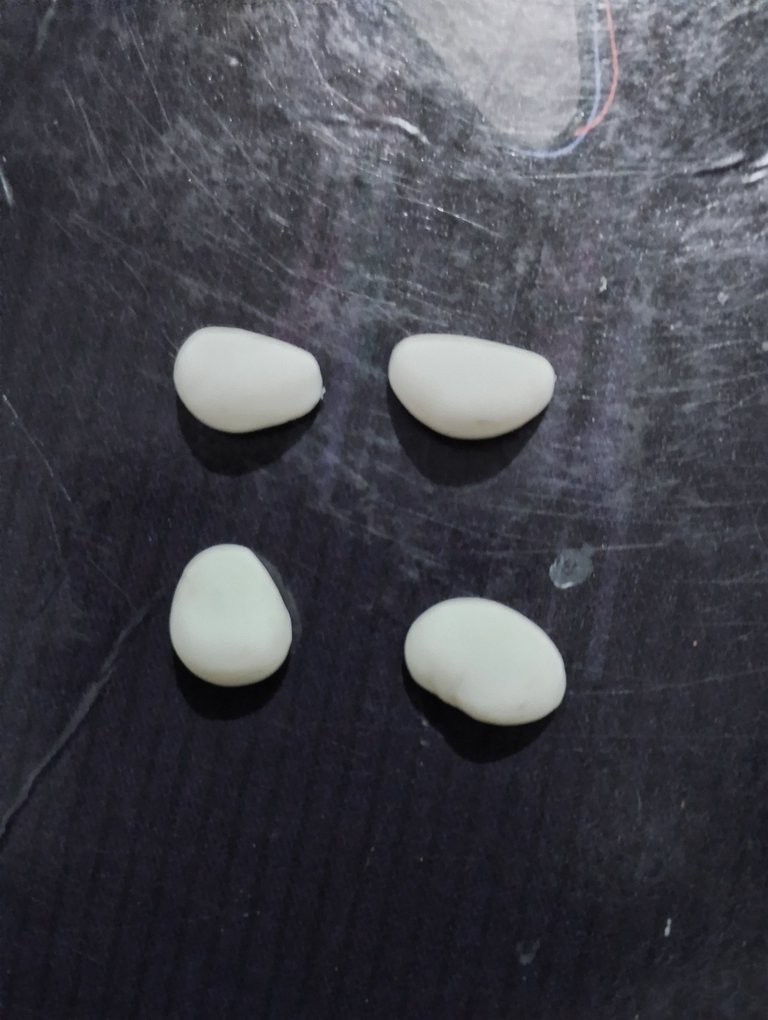

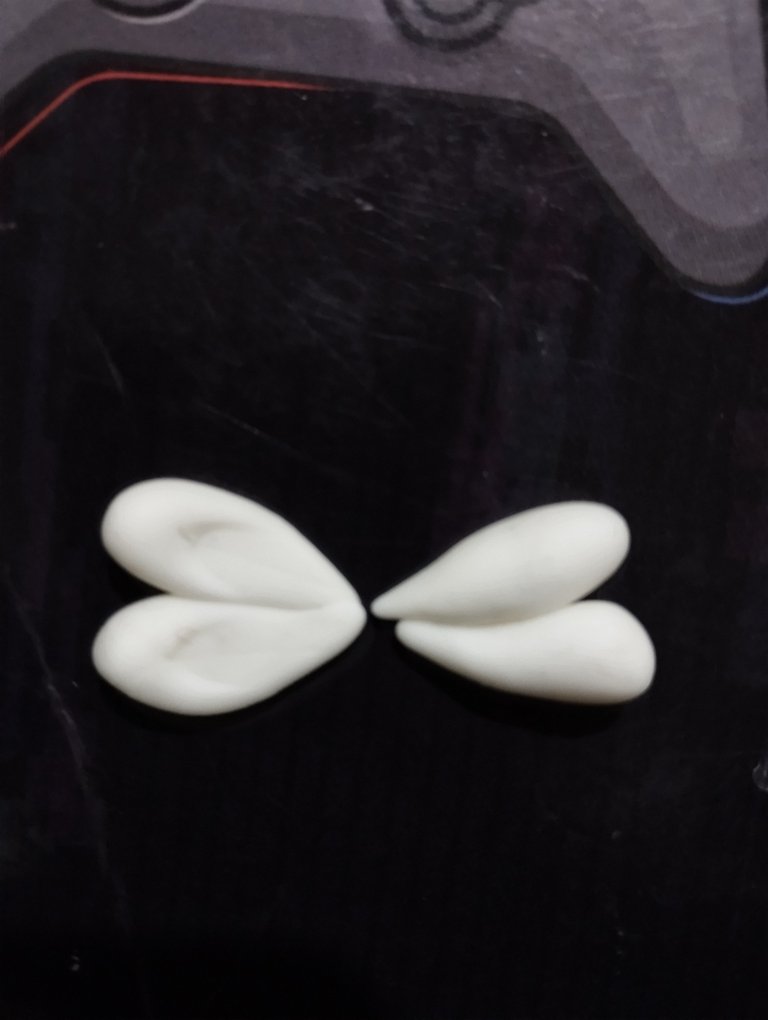

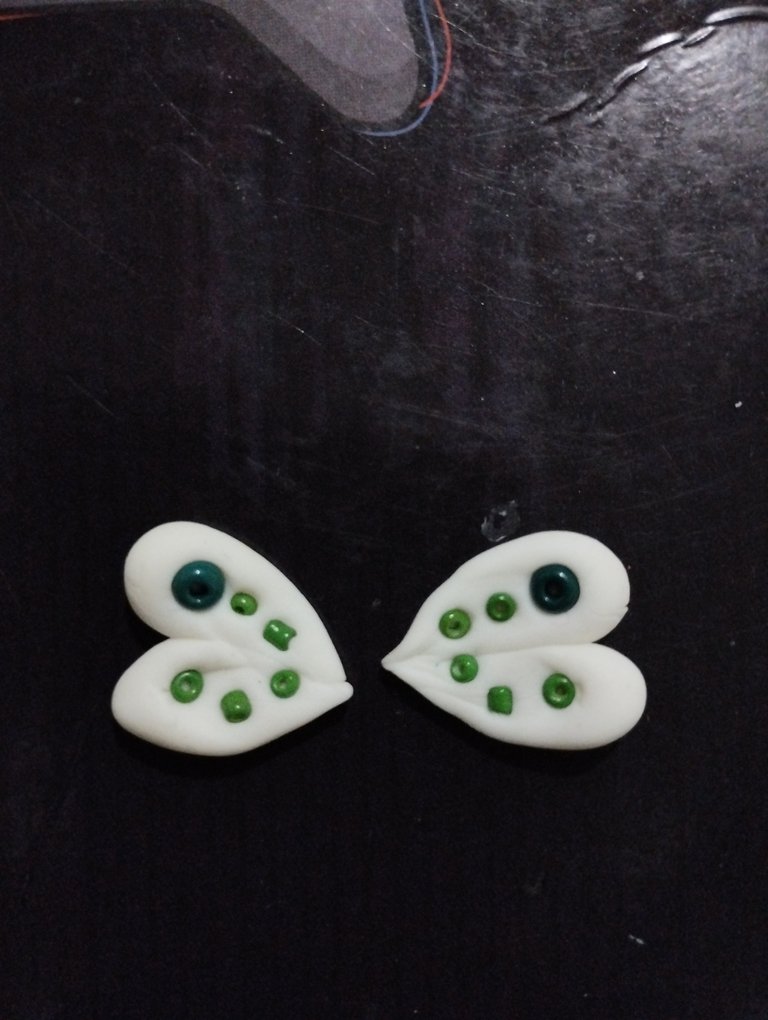

We can make the pendant with the same material, forming a cylinder with one of the ends a little more bulging. We do this by pressing a little the dough between the index fingers. When we have a kind of ball at the top, we flatten it a little and pierce it with a needle. We attach it to the figure. If you wish we can leave it white to apply any color we like. | Podemos hacer el colgante con el mismo material, formando un cilindro con uno de los extremos un poco más abultado. Esto lo hacemos presionando un poco la masa entre los dedos índices. Cuando tenemos una especie de bola en la parte superior, aplanamos un poco y la perforamos con una aguja. La unimos a la figura. Si es su deseo lo podemos dejar blanco para aplicar algún color que nos guste. |

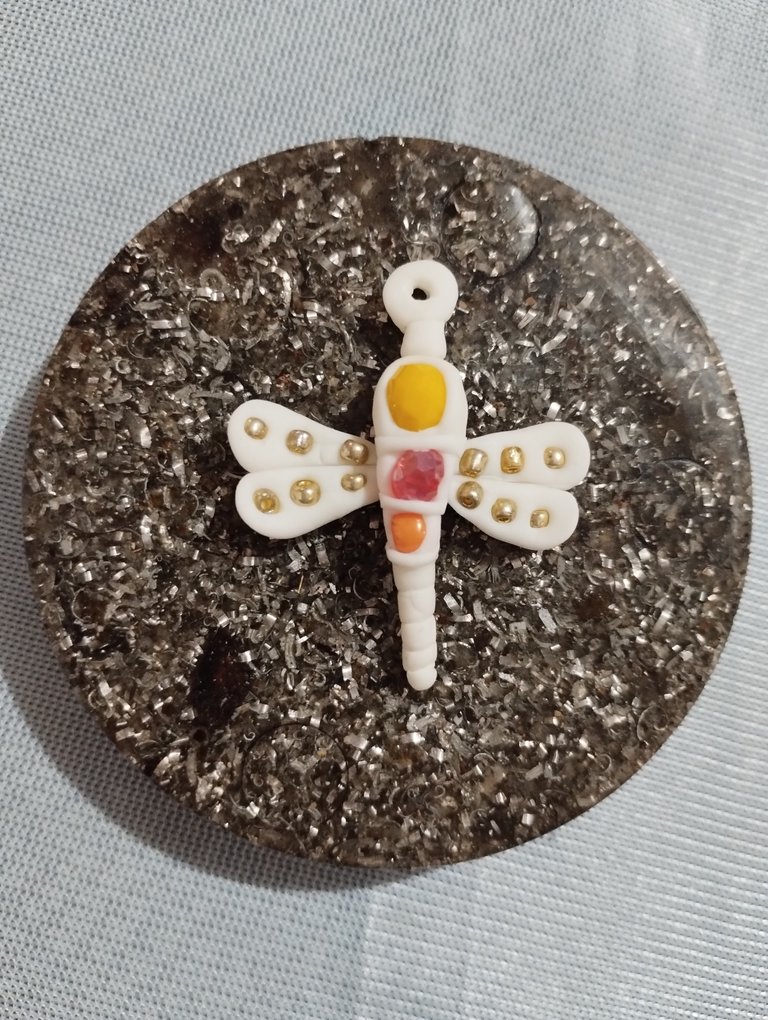

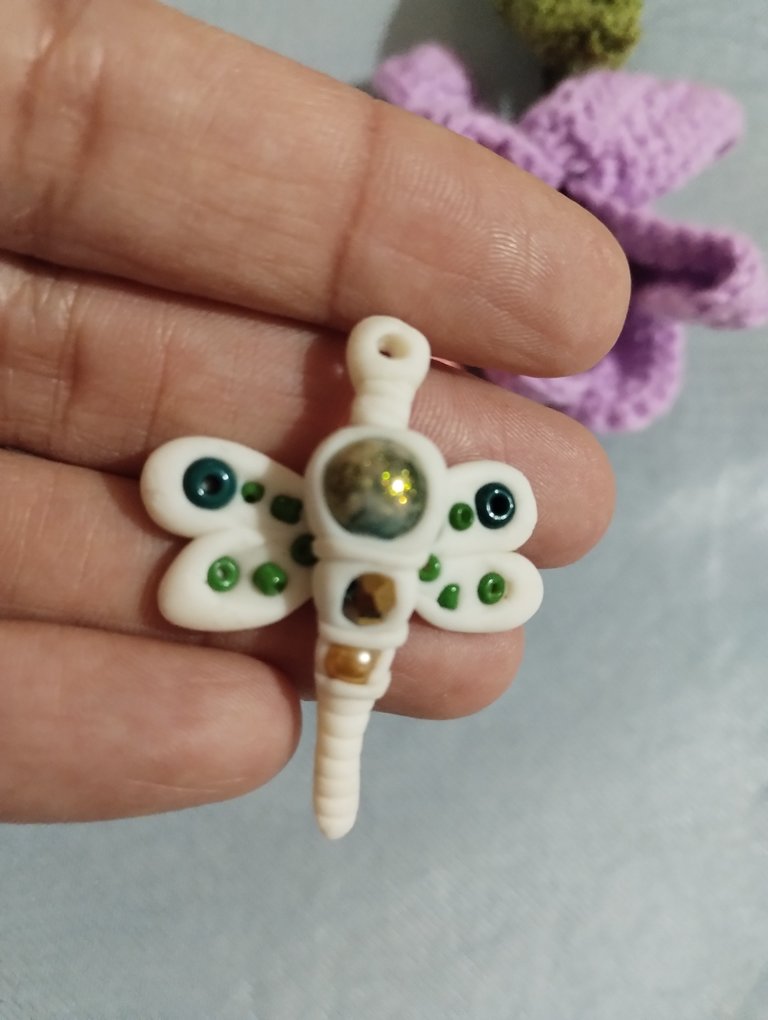

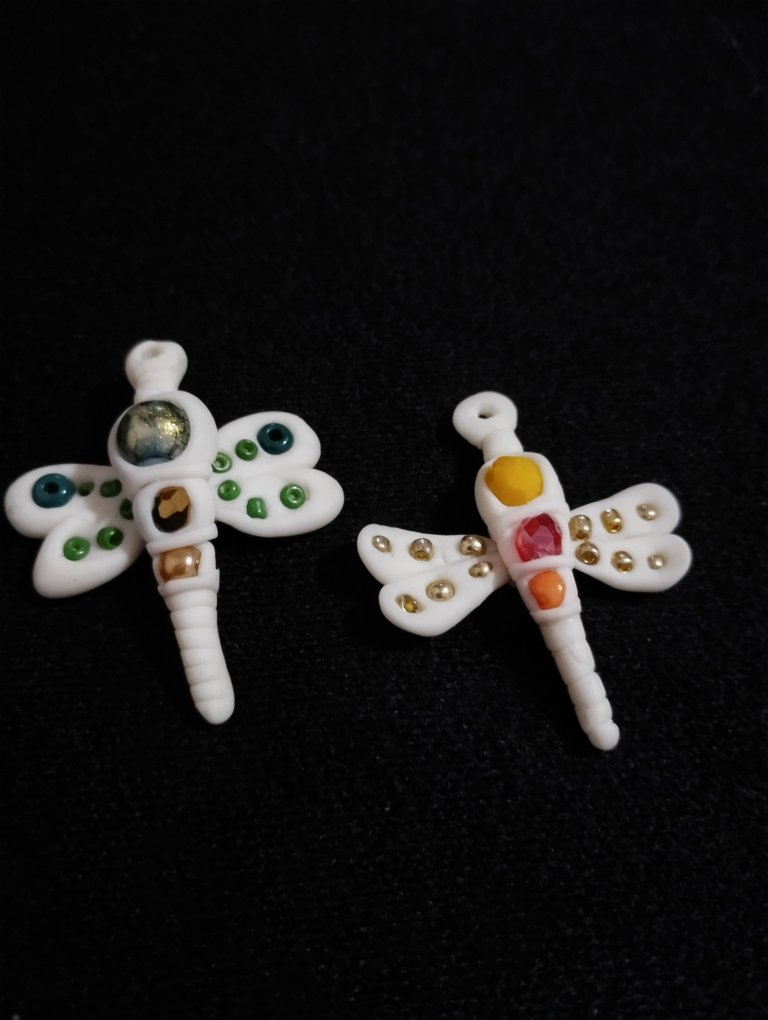

Imágenes editadas en: inshot
Fotos tomadas con Redmi 10

Images edited in: inshot
Photos taken with Redmi 10


It looks pretty cool. Love its design. Well done! Thank you for sharing this.
Waooo que hermosas te quedaron estas libelulas amiga para colgante y hasta para llaveros te felicito.
Que buena idea amiga. Gracias. Siii. Me gustaría hacer unos llaveritos. Gracias por tu aporte.
Que bueno éxitos bendiciones 🙏
Hola mi hna esa libélula se ve genial con esas cuentas.
Gracias mi estimado hermano.
Valoro mucho tu comentario.
Bendecido día.